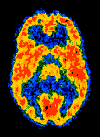I know posts on blogs are supposed to be short so bear with me on this one as it's a bit long, but it is a topic I'm very passionate about so here goes:
During my graduate studies at Cal. State. University of Los Angeles, I was absolutely facinated by the field of applied linguistics and language acquition. Part of the reason, of course, was that I had struggled as a language learner myself: first, as a child learning Korean after having spent the first 6 years speaking French in West Africa, and then a few years later learning English as a child who by then spoke fluent Korean! Not easy in terms of adjusting culturally, socially and lingusitically... So, when I received my Master's degree in TESOL (Teaching English to Speakers of Other Languages-- a
multidisciplinary field, which includes theoretical and practical studies of second language acquisition and language pedagogy), it seemed as though I had come a full circle in understanding and appreciating my own experiences of learning a second or third language!
When it comes to learning a language, all children have an innate and fierce desire to communicate and interact with those they love and care for them. Out of this human need, children begin to learn to communicate and interact with adults by immitating adult sounds, and speech including the adult actions and gestures they see. Parents and caregivers equally share the desire to connect with their babies by immitating back, approximating and celebrating their child's communicative efforts, however big or small, gestural or spoken, through meaningful interaction.
Back at CSULA, as part of my independent studies requirement, I decided to research a field that I had absolutely no prior knowledge of: American Sign Language (ASL). It proved to be an even more facinating topic than the one I was studying and which further supported the notion that humans are born with an innate ability to learn languages (spoken or sign), and most importantly, that language learning much like other areas of human development must be nurtured from the very first days of a child's life.
My current professional readings on the topic of signing with hearing babies have been overwhelmingly positive. Research supports the natural and meaningful introduction of ASL for hearing babies while they are still learning to develop those vocal muscles. When babies (around 6-7 months) are ready for their speech production, they will already have had both the concept and the sign to match the word they've uttered, and what a joy that will be!
According to the National Institute on Deafness and Other Communication Disorder (NIDCD), "The earlier any child is exposed to and begins to acquire language, the better that child's communication skills will become. Research suggests that the first six months are the most crucial to a child's development of language skills. Other studies focus on different ASL processing skills. Users of ASL have shown ability to process visual mental images differently than hearing users of English. Though English speakers possess the skills needed to process visual imagery, ASL users demonstrate faster processing ability--suggesting that sign language enhances certain processing functions of the human brain."
And if you thought signing was only for babies, Marilyn Daniels, Ph.D., author of Dancing with Words: Signing for Hearing Children's Literacy, states that "Signing is a kinetic act that stimulates activities in both the right brain, which is responsible for visual-spatial reasoning and long-term memory, and the left brain, which is responsible for processing language. When you are signing with hearing children, you're not only reinforcing their existing language, you are also giving them another way to express concept they already know thus creating another connection to that information in their brain." Studies like this support that signing with preschoolers help promote higher self-esteem, expression of emotions, higher reading scores and expand their vocabulary. Not only that, it's so much fun! This clearly makes sense since signing taps into the multisensory aspect of learning by allowing children to use all of their senses.
Have fun signing your second language! And visit
http://www.aslpro.com/cgi-bin/aslpro/aslpro for a virtual ASL dictionary!!!
Musically,
Miss Sunny


